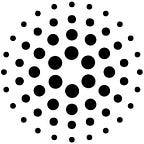Explore and communicate landslides risk in Nepal using interactive maps
In the many mountainous areas of Nepal, landslides — during monsoon season or from earthquakes — are a recurring threat. Landslides can have severe and lasting damage on infrastructure and livelihoods.
I created this interactive map for the last call from #VizRisk: the aim is to unveil hidden patterns of landslide risk for the country, exploring digital techniques of georeferenced visualization to communicate topic and results. The analysis focuses on the Nepalese roads network and the risk impacting it.
How I made the map
Data Source
I pulled in data from NASA Global Landslide Catalog and used a combination of different tools to recollect, process and visualize the information. The map is composed by three different visualization cards: hazard, exposure and risk.
Hazard
In the hazard card, rainfall-triggered landslide events are recollected from the NASA catalog in .geojson format, and represented using the dark-grey dots with radius proportional to the event gravity (small, medium, large, very large). The primary routes network from Nepal come from the OpenStreetMap archive, using overpass-turbo engine. The two layers are then combined using geometrical intersection and remapping the data to a color domain. All the data processing is performed using Grasshopper for Rhino3D.
Exposure
The Exposure map aims to understand the value of streets network asset and its importance for the local transportation system. For this analysis the primary routes are defined by a ranking which combines two main features from the OSM data: highway typology (primary, secondary, trunk) and directions (one-way, two-way).
Risk
The Risk map is the result of the combination of Hazard and Exposure, where the two previous ranking values were multiplied and generate a previously hidden pattern that helps tell the story of where a landslide disaster might happen in Nepal.
The process
After the data processing in Grasshopper, a further script component was developed to export the layers (polylines, points, and their feature properties) in .geojson format. These datasets are imported in Mapbox.gl.js, adding the map style (customized using Mapbox Studio) and the user interactivity. A further interface behavior was included in the legend, that is the value on routes hovering, using css style properties combined with the map.on(‘mouseenter’) method. In the hazard card, additional pop-ups are showing properties about the landslides events.
The Exposure map aims to understand the value of streets network asset and its importance for the local transportation system. For this analysis the primary routes are defined by a ranking which combines two main features from the OSM data: highway typology (primary, secondary, trunk) and directions (one-way, two-way).
The Risk map is the result of the combination of Hazard and Exposure, where the two previous ranking values were multiplied and generate a previously hidden pattern that helps tell the story of where a landslide disaster might happen in Nepal. Hover on the routes mapped to see the moving value on legend.
After the data processing in Grasshopper, a further script component was developed to export the layers (polylines, points, and their feature properties) in .geojson format. These datasets are imported in Mapbox.gl.js, adding the map style (customized using Mapbox Studio) and the user interactivity. A further interface behavior was included in the legend, that is the value on routes hovering, using css style properties combined with the map.on(‘mouseenter’) method. In the hazard card, additional pop-ups are showing properties about the landslides events.
